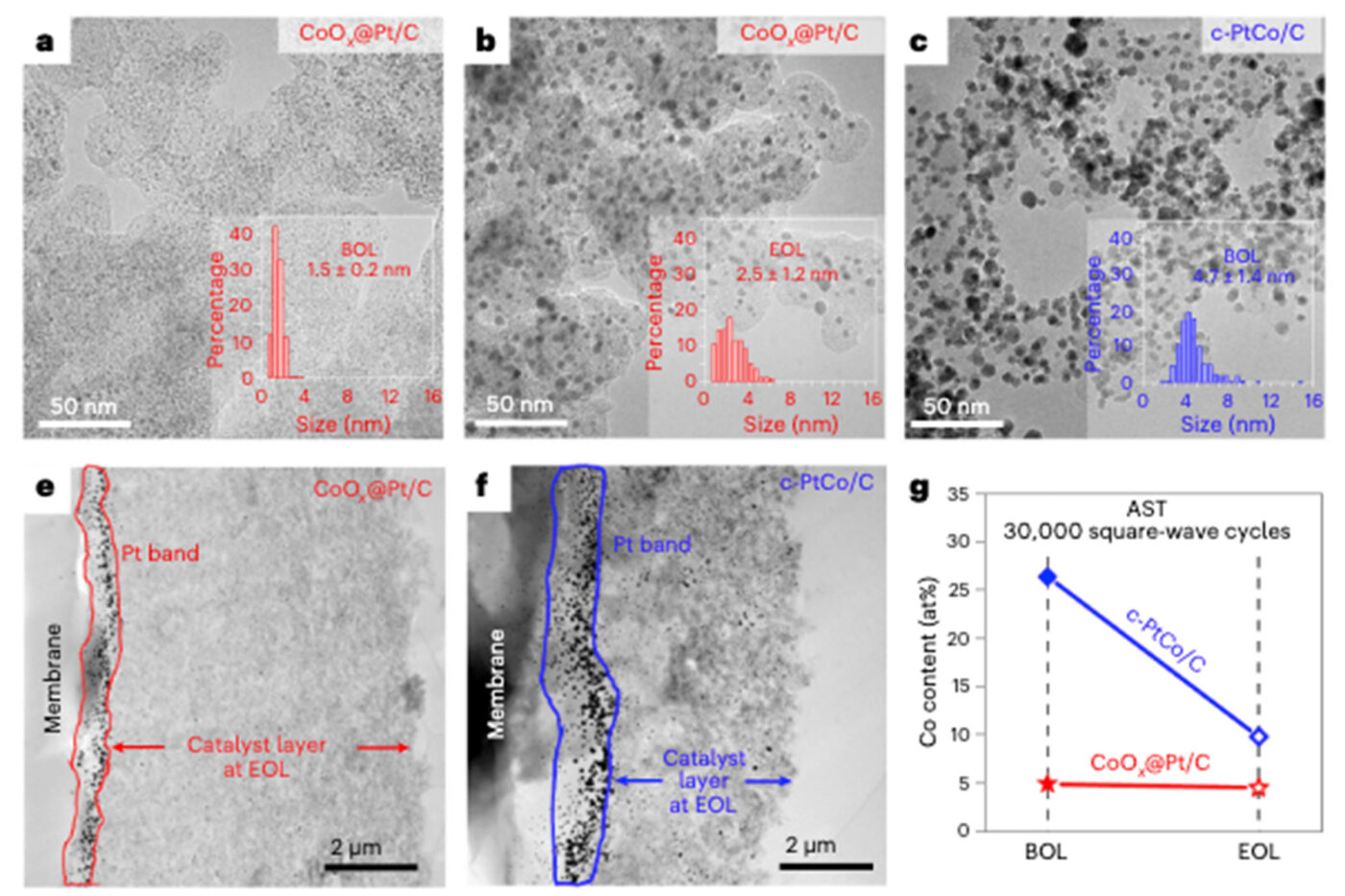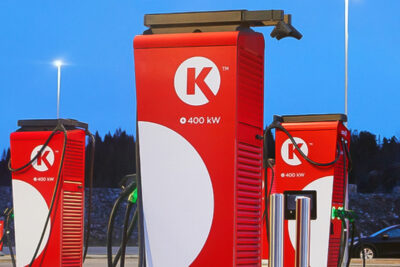UCLA scientists make durability breakthrough in PEM fuel cells
The study to improve the longevity of proton-exchange membrane (PEM) fuel cells was published in Nature Catalysis and describes the effects of embedding cobalt oxide clusters in an ultrafine platinum catalyst for the fuel cell membrane. UCLA Sameuli School of Engineering materials science and engineering professor Yu Huang, who led the study, says their findings have enabled them to estimate that, for example, passenger cars equipped with the new durable fuel cells could last 87.5 per cent longer than the energy department’s ultimate goal of eight thousand hours or roughly 150,000 miles.
Transport experts dealing with both fuel cell and battery electric transport solutions tend to agree that fuel cells are best utilized in so-called hard-to-decarbonize sectors, such as long-haul, heavy-duty applications, aviation and maritime applications owing to their higher energy density than batteries but also the scarcity of the required platinum. Therefore, the more relevant reference here would be the study’s mention of the benefits in applications for heavy-duty vehicles and vessels. Here, the authors of the study say that slightly increasing the use of the embedded/oxide platinum catalyst could also improve the longevity of fuel cells in these application types without mentioning further details.
Huang, who holds the Traugott and Dorothea Frederking Endowed Chair at UCLA Samueli, explained, “Our research demonstrated an atomic interior scaffold that holds platinum atoms in place in the catalyst so they remain stable over an extended period of time.”
The researchers have replaced a traditional platinum alloy inside PEM fuel cells with embedded clusters of cobalt-oxide molecules inside shells of platinum atoms. This method outperformed traditional platinum-cobalt alloys in durability and longevity.
PEM fuel cells for both hard-to-decarbonise transport and stationary storage applications are not only enjoying a surge in interest in the USA as the country implements its hydrogen strategy but also in China and India, as both countries and surrounding regions are acutely aware of their geopolitical vulnerability due to a dependence on fossil fuel imports. These efforts are not only focussing on research and development but also on simultaneous scaling of fuel cell and electrolyser manufacturing as well as applications in hard-to-decarbonise transport solutions.
Not mentioned in the study was a key vulnerability in the use of hydrogen PEM technology for these sectors: their reliance on platinum, which is scarce and predominantly sourced from South Africa and Russia. Considerable research efforts are also being made internationally to replace platinum with iron solutions. In the meantime, PEM fuel cells may enjoy advances in existing technology with solutions such as these developed at UCLA.
Huang was joined in the research by senior co-corresponding author Alessandro Fortunelli of the National Research Council in Italy, among other authors of the study, which was funded in part by the U.S. Office of Naval Research.





0 Comments